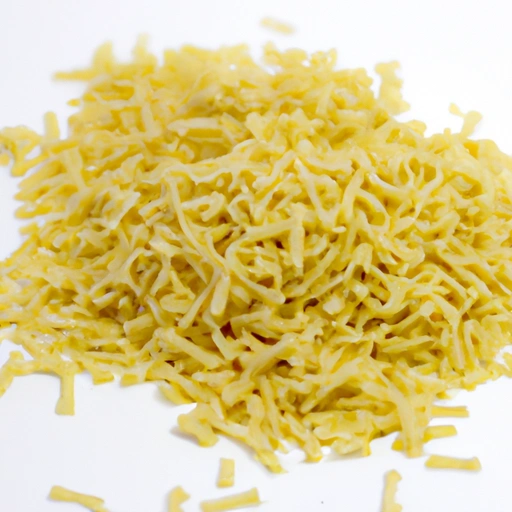Farfel
Description

Farfel is a traditional Jewish egg noodle product that is customarily used in a variety of dishes. These small, pellet-shaped pieces of pasta are typically made by rolling out the dough, allowing it to dry slightly, and then scraping or chopping it into tiny pieces. Farfel is known for its distinctive texture and ability to absorb flavors well, making it a unique and versatile ingredient in both sweet and savory dishes.
Common uses
Farfel is commonly used in soups, casseroles, kugels, and as a side dish. It's particularly popular during Passover, where it can be used in place of grains that are not kosher for the holiday. Farfel is also employed in stuffing recipes and can be sweetened for use in desserts.
Nutritional value
Calories
A 1/2 cup (approximately 30 g) serving of uncooked farfel provides around 100 calories.
Protein
Farfel offers around 2-3 g of protein per serving, making it a modest source of protein.
Fat
Farfel itself is low in fat, with less than 1 g per serving, but it can absorb fats from other ingredients in cooking.
Carbohydrates
With approximately 22-25 g of carbohydrates per serving, farfel is primarily a source of energy-providing carbs.
Vitamins
As farfel is a noodle product, it is not a significant source of vitamins. However, it can contribute to one's vitamin intake when paired with vitamin-rich foods.
Minerals
Depending on the flour used, farfel may provide small amounts of essential minerals such as iron and selenium.
Health benefits
While farfel is not known for being a health food, it can be part of a balanced diet when consumed in moderation and combined with a variety of nutritious ingredients.
Potential risks
Due to its high carbohydrate content, excessive consumption of farfel may not be suitable for individuals on a low-carb diet. Additionally, as it is a wheat-based product, it is not appropriate for those with celiac disease or gluten sensitivity.
Common recipes
Recipes that typically feature farfel include matzo farfel pudding, farfel kugel, and chicken soup with farfel.
Cooking methods
Farfel can be boiled, baked, or toasted, depending on the recipe and desired outcome. Boiling is common for soups, while baking is preferred for casseroles and kugels.
Pairing with other ingredients
Farfel pairs well with a variety of ingredients including mushrooms, onions, chicken, beef, vegetables, and sweet mix-ins such as apples, cinnamon, and sugar.
Summary
Farfel is a small, pellet-like pasta with a rich history in Jewish cuisine, particularly during Passover. It is valued for its texture and ability to absorb flavors, and while not a powerhouse of nutrition, it can be included in a balanced diet. Farfel is versatile in cooking and can be used in a range of recipes, from soups and side dishes to desserts and kugels.